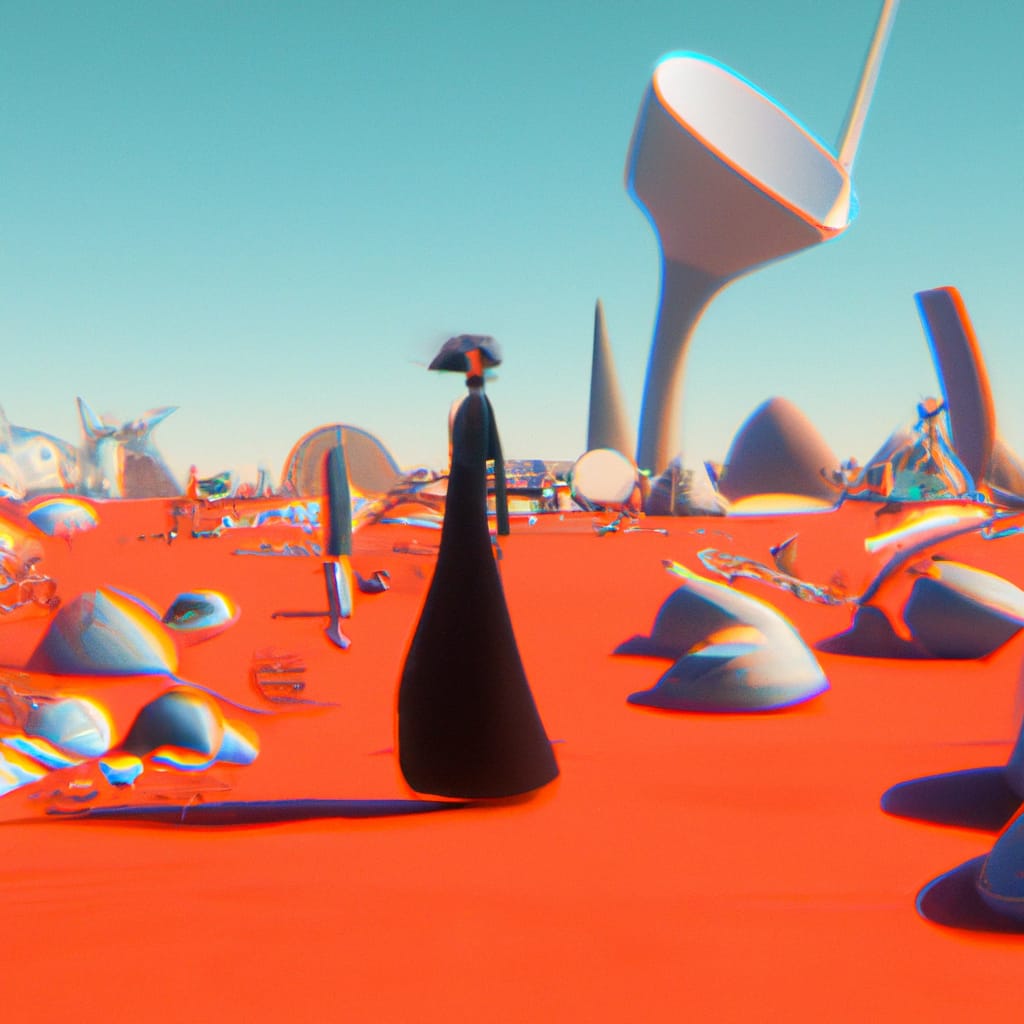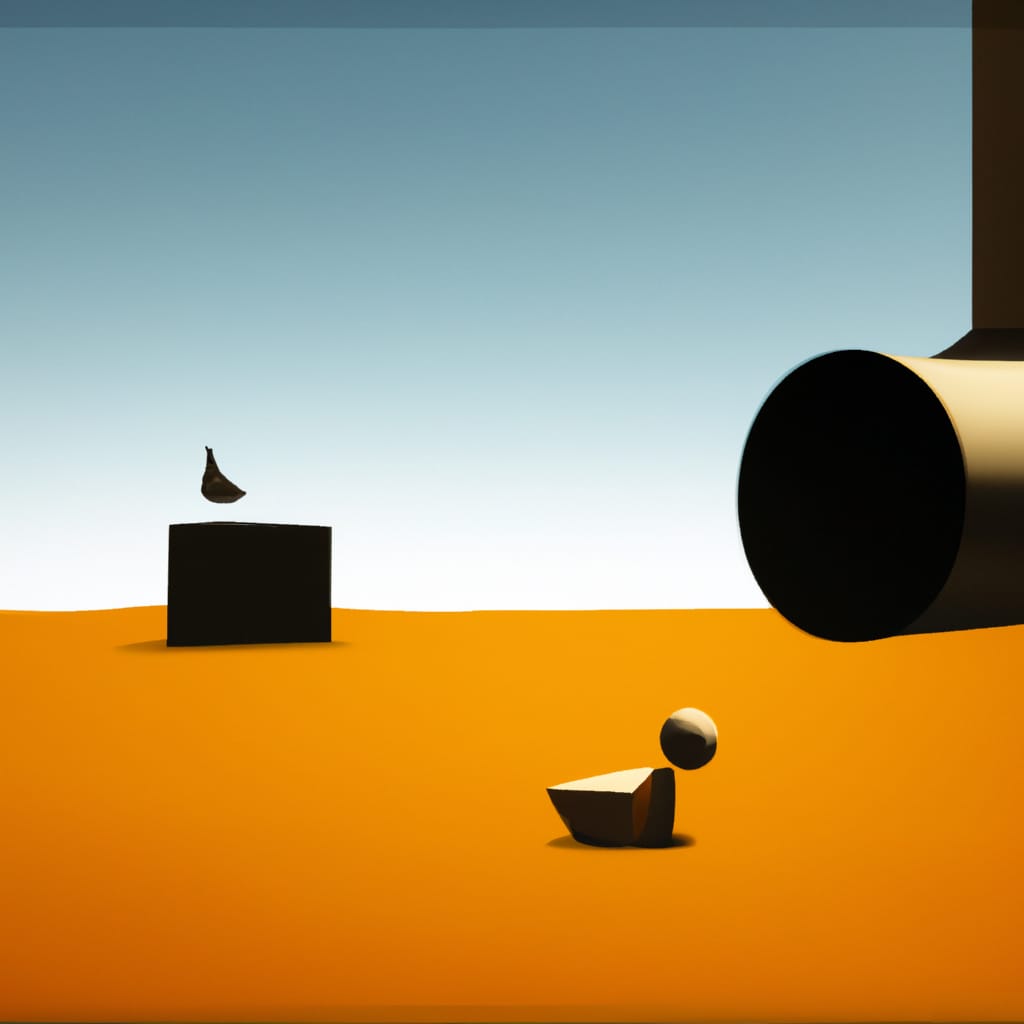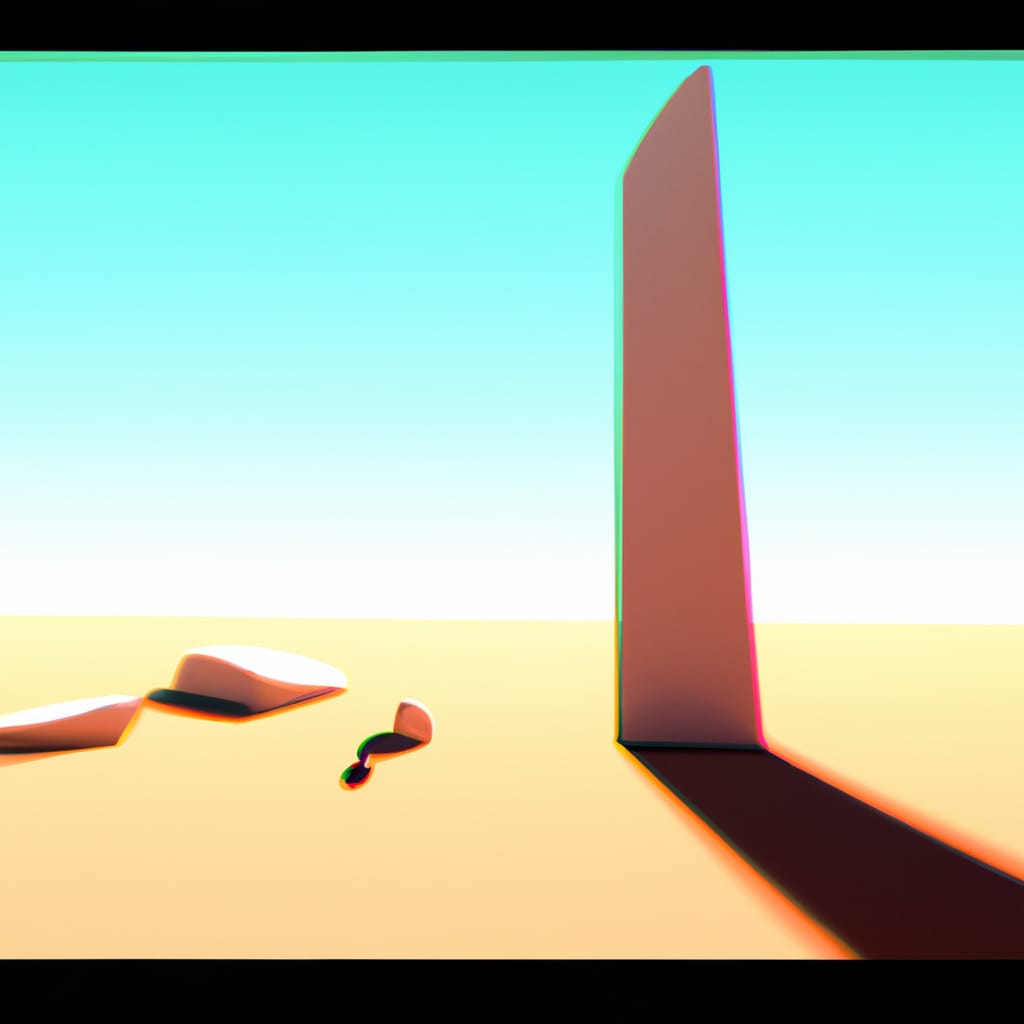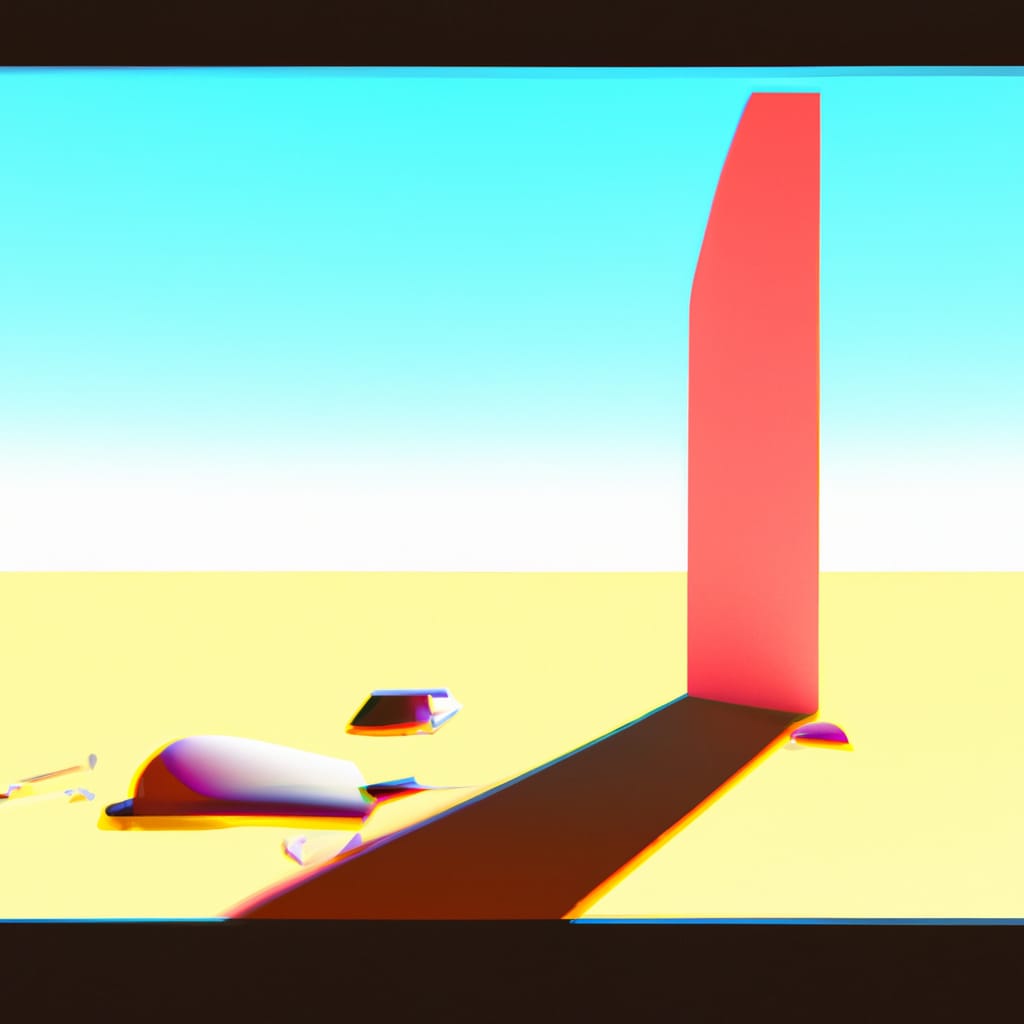It’s fascinating how a single image can undergo so many rapid transformations, resulting in completely different versions each time. The first version with pastel-colored geometric shapes provides a clear image of the character discovering an old tin can on the Bosphorus beach, but it lacks vibrancy, making it somewhat dull. The second version, with a diffuse landscape of shards and debris, uses colors that remind one of 3-D glasses, adding vibrancy and depth to the image.
However, the third iteration takes things to a completely different level by dissolving the original motif and transforming the metal can into a giant tube in a comic style. The Bosphorus now becomes a sunny fantasy landscape, and a figure appears but ultimately fades away into the diffuse background.
With each new generation of pictorial material, the diffuseness takes refuge in surfaces, faces, colors, and diffusely structured crystallization points, eroding any impression of unambiguous meaning. This erosion of meaning is fascinating and irritating in the same time.


























